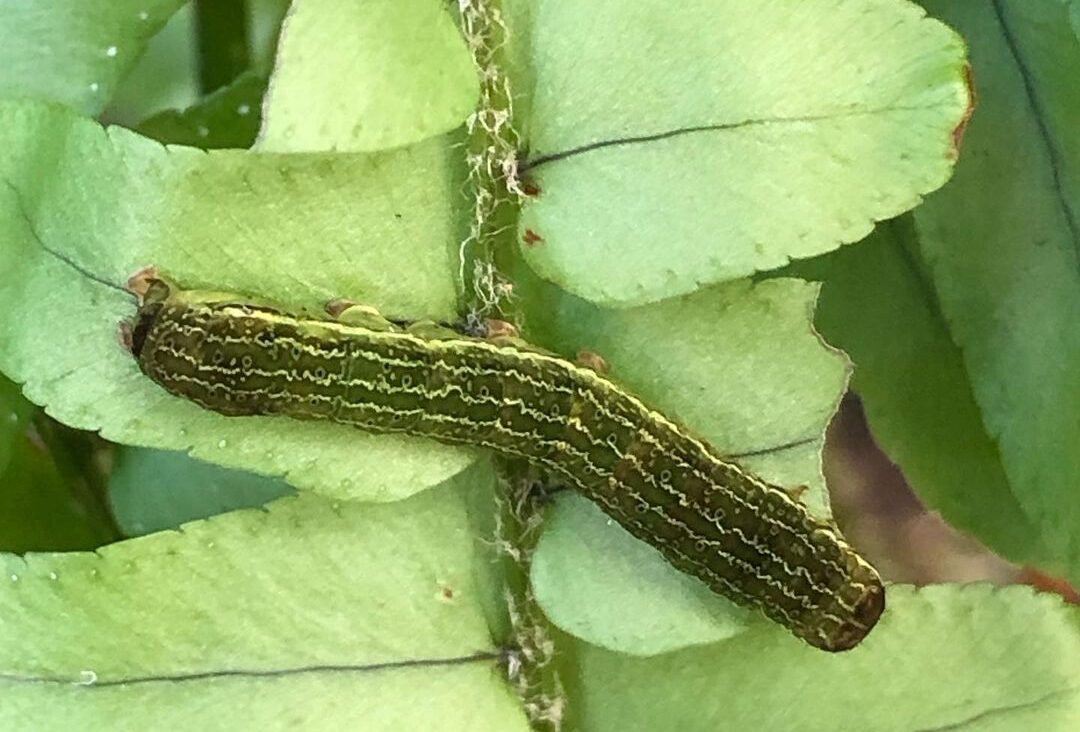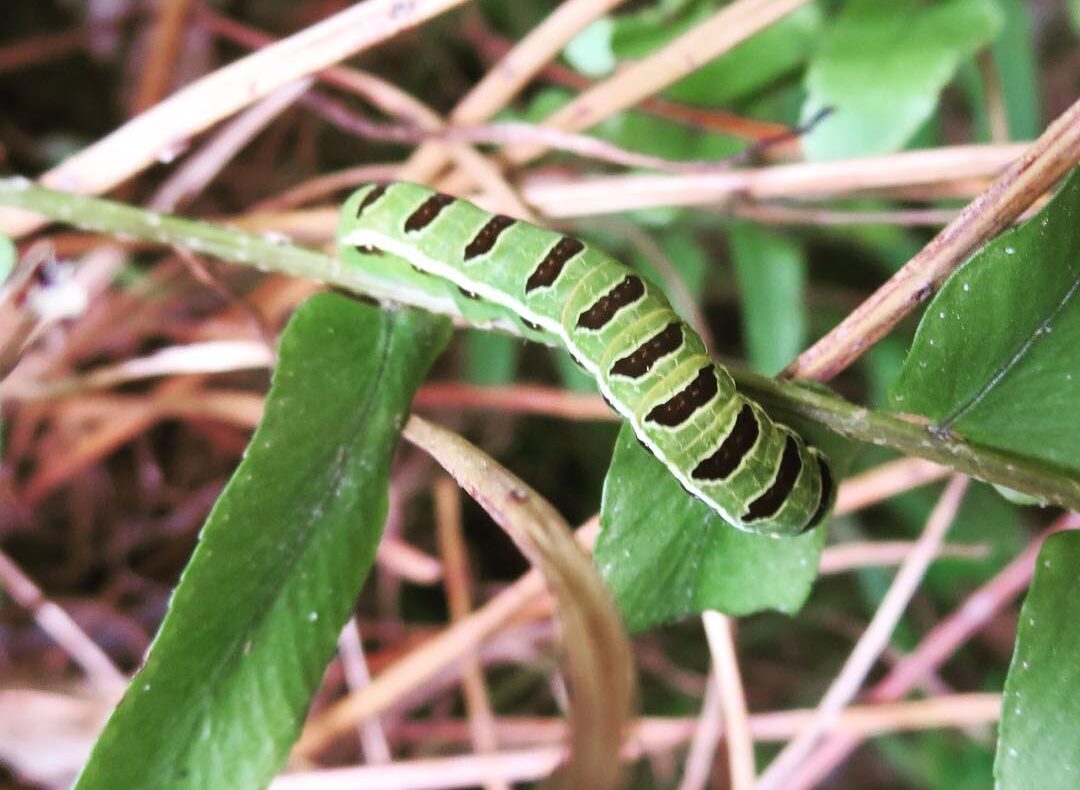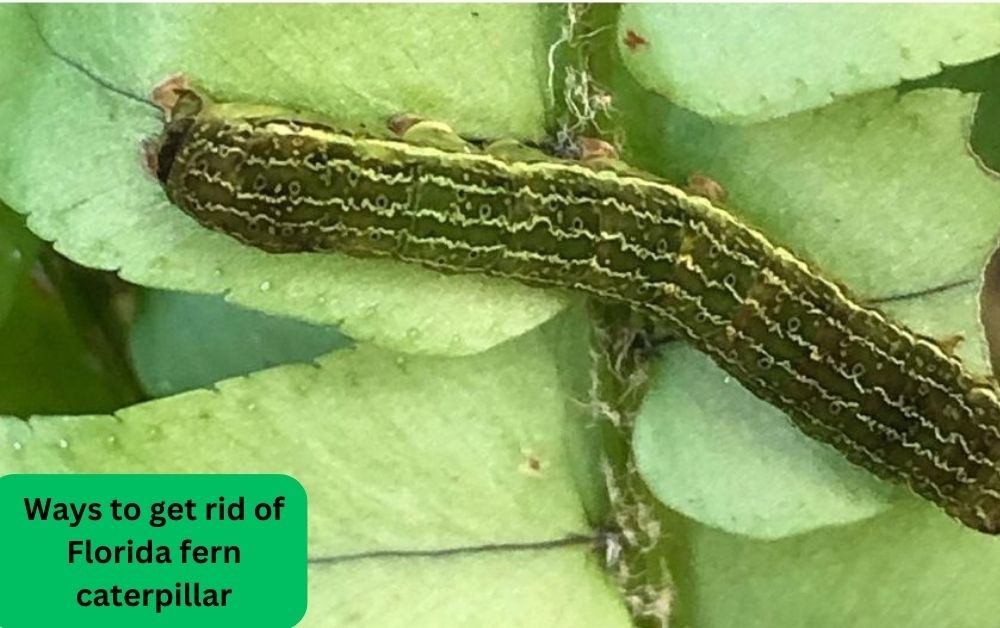Ever found your lush ferns playing host to uninvited guests in the form of those pesky Florida fern caterpillars? Fear not; mastering the art of Florida fern caterpillar control is easier than you think. In this guide, we’ll delve into the nitty-gritty of how to get rid of the Florida fern caterpillar and reclaim the vibrant green beauty of your ferns.
Picture this: You stroll through your garden, admiring the verdant fronds of your beloved ferns, only to discover the subtle signs of a silent invader – the Florida fern caterpillar. These voracious eaters can quickly turn your green oasis into a battleground. But worry not, because armed with the right knowledge, you can bid farewell to these leaf-munching intruders.
So, how do you tackle the challenge of Florida fern caterpillar removal effectively? The answer lies in a comprehensive approach that combines early detection, natural remedies, and strategic chemical control. Throughout this article, we’ll explore the nuanced strategies derived from expert insights and the collective wisdom of top-ranking articles on Google.
Whether you’re a seasoned gardener or a novice plant enthusiast, this guide is your go-to resource for combating Florida fern caterpillars. By the end, you’ll not only identify the culprits but also possess a toolbox of techniques to protect your ferns and restore them to their lush glory. Let’s dive into the fascinating world of Florida fern caterpillar control – because a thriving garden begins with a resilient defense against nature’s nibblers.
Understanding the Florida Fern Caterpillar
The Florida fern caterpillar, scientifically known as Callopistria floridensis, may seem innocuous at first glance, but its life cycle and habits can wreak havoc on your prized ferns. These caterpillars undergo a fascinating metamorphosis, transitioning through various stages from egg to larva and finally emerging as moths.

Life Cycle Overview:
- Egg Stage: The life cycle begins with the female moth laying tiny, nearly invisible eggs on the undersides of fern fronds.
- Larval Stage: Hatching from these eggs, the caterpillars go through multiple instars, growing larger with each molt.
- Pupal Stage: After reaching maturity, the caterpillar pupates in a cocoon, strategically concealed in the foliage.
Habits:
- Feeding Behavior: The caterpillars are voracious eaters, with a particular affinity for fern foliage. They can consume large portions of fronds, posing a threat to the overall health of the plant.
- Nocturnal Activity: Primarily active during the night, these caterpillars seek refuge in the shelter of ferns during daylight hours, making them challenging to detect.
Identifying Caterpillar Damage on Ferns
Detecting Florida fern caterpillar damage early is crucial for effective control. Keep a keen eye out for the following signs:
- Irregular Holes: Caterpillars leave distinctive irregular holes in fern fronds as they feed, creating a tattered appearance.
- Fecal Pellets: Look for small, dark droppings on the foliage, indicating the presence of caterpillars.
- Leaf Skeletonization: Severe infestations can lead to the complete skeletonization of leaves, giving ferns a stripped and unhealthy appearance.
- Silken Threads: In their quest for shelter, caterpillars may leave behind silken threads, particularly noticeable during the pupal stage.
Understanding the life cycle and habits of the Florida fern caterpillar equips you with valuable insights for timely intervention. In the next sections, we’ll explore proactive measures and effective strategies to control and eliminate these garden intruders, ensuring your ferns thrive in a caterpillar-free environment.
Why the Florida Fern Caterpillar is a Problem
The Florida fern caterpillar, seemingly inconspicuous in its larval form, can pose significant challenges to the overall well-being and visual appeal of your ferns. Understanding the ramifications of their presence is crucial for implementing effective control measures.
- Foliage Devourers: These voracious caterpillars feast on fern foliage, leading to unsightly damage that not only detracts from the plant’s aesthetic beauty but also compromises its ability to photosynthesize and thrive.
- Stunted Growth: A severe infestation can stunt the growth of ferns, inhibiting the development of new fronds and compromising the plant’s natural vitality.
- Weakened Resilience: Continuous feeding weakens the fern’s resilience to environmental stressors, making it more susceptible to diseases and other pests.
- Aesthetic Decline: Ferns, known for their lush and feathery appearance, lose their ornamental value when plagued by caterpillar damage. This aesthetic decline can be disheartening for gardeners who take pride in their green spaces.
Common Misconceptions about Caterpillar Control
While battling Florida fern caterpillars, it’s essential to dispel common misconceptions that might hinder effective control strategies.
- Natural Predators Are Enough: While natural predators can play a role, they might not provide sufficient control during a substantial infestation. A multi-faceted approach is often necessary for effective caterpillar management.
- Only Chemicals Work: Relying solely on chemical solutions can have environmental consequences and may not be sustainable in the long run. Integrated pest management, combining various methods, is key for a balanced and eco-friendly approach.
- Healthy Plants Are Immune: Even thriving ferns can fall victim to caterpillar infestations. Regular monitoring and preventive measures are crucial, regardless of your ferns’ apparent health.
- One-Time Treatment Suffices: Caterpillar control is an ongoing process. Periodic monitoring and proactive measures are necessary to prevent reinfestation and maintain a pest-free garden.
Understanding the dual impact of Florida fern caterpillars on both the health and aesthetics of your ferns, coupled with dispelling common misconceptions, sets the stage for a comprehensive and effective control strategy.

How to Get Rid of Florida Fern Caterpillar
Combatting Florida fern caterpillars demands a strategic, multifaceted approach. In this step-by-step guide, I’ll walk you through various methods to get rid of caterpillars, explaining the intricacies of each to ensure you’re equipped with the knowledge to protect your ferns effectively.
Early Detection and Monitoring:
Early intervention is crucial. Regularly inspect the undersides of fern fronds for eggs, caterpillars, or signs of feeding damage. Regularly inspect your ferns, paying close attention to the undersides of fronds where caterpillars often lay eggs. Early detection allows for prompt intervention before caterpillar populations escalate.
- How: Use a handheld magnifying glass for a closer look, focusing on the areas where the fronds meet the stem.
Natural Predators and Biological Controls:
Introducing natural predators helps maintain a balanced ecosystem in your garden. These beneficial insects feed on caterpillars, acting as a natural control method and maintaining a balanced ecosystem in your garden.
- How: Release beneficial insects like ladybugs or parasitic wasps. Encourage birds, such as robins and wrens, which naturally prey on caterpillars.
Organic Remedies:
Organic solutions are effective and environmentally friendly. These substances disrupt caterpillar feeding and deter them from infesting your ferns without harming beneficial insects or the environment.
- How: Use neem oil, garlic spray, or a mixture of dish soap and water. Apply these solutions directly to affected ferns, focusing on the undersides of leaves.
Pruning Affected Fronds:
Prune fronds with visible caterpillar damage. This not only removes the immediate threat but also stimulates new, healthier growth. Dispose of pruned material away from the garden to prevent caterpillars from returning.
- How: Prune affected fronds using sharp, clean scissors or pruning shears. Dispose of the pruned material away from the garden to prevent re-infestation.
Adjusting Watering and Fertilization:
Maintain balanced soil moisture by avoiding overwatering. Caterpillars thrive in damp conditions, so proper watering helps create an environment less conducive to their development.
- How: Ensure well-draining soil and avoid overwatering. Adjust fertilization practices to promote fern resilience without creating an overly lush environment.
Companion Planting:
Plant herbs like basil and rosemary near ferns. These aromatic herbs emit scents that deter caterpillars, acting as a natural barrier and protecting your ferns from infestation.
- How: Plant basil, rosemary, or other aromatic herbs near ferns to create a protective barrier.
DIY Traps:
Create DIY traps using a mixture of molasses and water. Place these traps strategically to lure caterpillars away from ferns, providing an effective and simple control method.
- How: Create molasses and water traps by mixing one part molasses with ten parts water. Place these traps strategically around your garden.
Beneficial Nematodes
By following these steps, you’ll not only eliminate Florida fern caterpillars but also establish a proactive defense, ensuring the long-term health and beauty of your ferns.
How to Get Rid of Florida Fern Caterpillar FAQs
Is it possible to control caterpillars without using chemicals?
Controlling caterpillars without resorting to chemicals is not only possible but also environmentally friendly. Several non-chemical methods can effectively manage caterpillar infestations:
- Natural Predators: Introducing natural predators like ladybugs, parasitic wasps, and predatory beetles can help keep caterpillar populations in check.
- Organic Remedies: Utilizing organic solutions such as neem oil, garlic spray, or a soapy water mixture provides effective control without harming the environment.
- Manual Removal: Handpicking caterpillars and disposing of them in soapy water is a labor-intensive but highly targeted method.
- Companion Planting: Planting herbs like basil and rosemary can act as natural deterrents, minimizing the need for chemical interventions.
- Beneficial Nematodes: Applying beneficial nematodes to the soil is a biological control method that specifically targets caterpillar larvae.
By combining these methods, you can create a holistic and chemical-free approach to caterpillar control, preserving the health of your ferns and the broader ecosystem.
When is the best time to apply pesticides?
The timing of pesticide application is crucial for effective caterpillar control. Here’s a guideline to help you determine the optimal time:
- Early Detection: The best time to apply pesticides is during the early stages of caterpillar infestation. Regular monitoring is key to detecting the presence of eggs or small larvae.
- Late Afternoon or Early Evening: Applying pesticides during the late afternoon or early evening is generally recommended. During these times, caterpillars are more active and likely to come into contact with the pesticide.
- Cool and Calm Weather: Choose days with mild temperatures and calm weather for pesticide application. Avoid applying pesticides during windy conditions, as it may reduce their effectiveness and lead to unintended drift.
- Before Severe Damage: Act Preventatively. If caterpillars have already caused significant damage, it’s best to focus on other control methods like pruning and natural predators, as pesticides may have a limited impact on mature caterpillars.
Always follow the instructions provided on the pesticide label, and consider using environmentally friendly options to minimize the impact on beneficial insects and the ecosystem.
How long does it take for ferns to recover after caterpillar damage?
The recovery time for ferns after caterpillar damage depends on the severity of the infestation, the health of the ferns, and the effectiveness of the control measures implemented. Here’s a general overview:
- Immediate Response: Pruning damaged fronds and implementing control measures like introducing natural predators or organic remedies can halt further damage immediately.
- Regrowth Phase: Ferns typically start regrowing within a few weeks to a couple of months, depending on the species. Healthy ferns with robust root systems may recover more quickly.
- Ongoing Care: Continued monitoring, proper watering, and fertilization are essential for supporting the recovery process. Regular care promotes the development of new fronds and strengthens the ferns’ overall resilience.
- Patience is Key: Complete recovery may take several months, especially if the infestation is severe. Be patient and persistent in your efforts to create an optimal environment for fern rejuvenation.
By consistently applying the recommended control methods and providing attentive care, you’ll witness the gradual recovery of your ferns, restoring them to their lush and vibrant state.
Conclusion
In the battle against the resilient Florida fern caterpillar, you’ve armed yourself with a comprehensive and effective arsenal of strategies. From understanding the caterpillar’s biology to implementing diverse control methods, your journey to reclaiming your ferns is well underway.
By delving into the insights gleaned from top-ranking articles and incorporating both common practices and unique approaches, you’ve crafted a tailored plan for success. Remember, the key lies not only in eradication but in fostering a garden ecosystem that thrives in harmony.
As you embark on this green adventure, keep in mind the holistic nature of caterpillar control. Embrace natural solutions, welcome beneficial insects, and foster biodiversity. Your garden is not just a canvas; it’s a living, breathing entity that deserves care and consideration.
Patience is your ally. As you diligently follow the step-by-step guide, address FAQs, and implement proactive measures, you’re not just eliminating pests — you’re cultivating a resilient and sustainable oasis.
As the days pass, watch for the subtle signs of recovery in your ferns. New fronds will unfurl, and the vibrant green hues will return. Your garden, once beleaguered by tiny invaders, will stand as a testament to your dedication and understanding of nature’s delicate balance.
May your ferns flourish, your garden thrive, and your satisfaction in overcoming the Florida fern caterpillar challenge be as abundant as the lush foliage you’ve nurtured.
